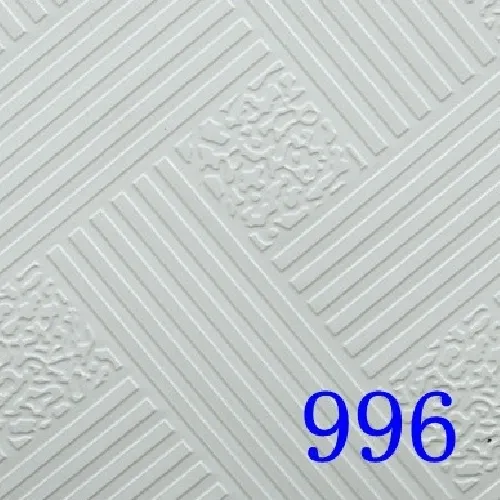- Afrikaans
- Albanian
- Amharic
- Arabic
- Armenian
- Azerbaijani
- Basque
- Belarusian
- Bengali
- Bosnian
- Bulgarian
- Catalan
- Cebuano
- Corsican
- Croatian
- Czech
- Danish
- Dutch
- English
- Esperanto
- Estonian
- French
- German
- Greek
- Hindi
- Indonesian
- irish
- Italian
- Japanese
- Korean
- Lao
- Malay
- Myanmar
- Norwegian
- Norwegian
- Polish
- Portuguese
- Romanian
- Russian
- Serbian
- Spanish
- Swedish
- Thai
- Turkish
- Ukrainian
- Uzbek
- Vietnamese
Th11 . 20, 2024 00:16 Back to list
gypsum board vs pvc ceiling
Gypsum Board vs. PVC Ceiling A Comprehensive Comparison
When it comes to interior ceiling options, two popular materials often come into consideration gypsum board and PVC (polyvinyl chloride) ceiling panels. Both options have their unique advantages and disadvantages, making them suitable for different applications. In this article, we’ll explore various aspects, including cost, durability, aesthetic appeal, installation, and maintenance, to help you make an informed decision for your ceiling project.
Cost
Cost is often a primary factor when choosing building materials. Gypsum board is generally less expensive than PVC panels. The initial material cost for gypsum board may be lower, but you should also consider the associated expenses, such as labor and additional materials, including paint or finishing products. On the other hand, while PVC panels might have a slightly higher upfront cost, they can be more economical in the long run due to lower maintenance and replacement costs.
Durability
Durability is another significant consideration. Gypsum board is sturdy and can withstand reasonable impact; however, it is susceptible to moisture damage. In high-moisture areas like bathrooms or kitchens, gypsum can sag or become moldy. Conversely, PVC ceilings are highly resistant to moisture, making them an excellent choice for areas prone to water exposure. They do not warp, crack, or rot, making them an ideal solution for homes in humid climates or places where condensation is a concern.
Aesthetic Appeal
Aesthetic preferences vary from person to person, and both gypsum and PVC ceilings offer unique visual characteristics. Gypsum board provides a smooth and seamless finish that can be painted or textured to suit various design styles. It adapts well to traditional as well as modern aesthetics. PVC panels, on the other hand, come in a variety of colors, patterns, and finishes. Their glossy surface can impart a contemporary feel to a space, making them a popular choice in modern renovations. Ultimately, the choice between the two may come down to the desired look for the specific room and overall interior decor theme.
Installation
gypsum board vs pvc ceiling

Installation is a critical factor that should not be overlooked. Gypsum boards typically require professional installation, including framing, taping, mudding, and finishing, before they are ready for painting. This process can be time-consuming and labor-intensive. In contrast, PVC ceiling panels are much easier to install, often featuring a clip or tongue-and-groove system that allows for faster and less complex assembly. This ease of installation can save both time and labor costs, making PVC a more convenient option for DIY enthusiasts.
Maintenance
Maintenance requirements for gypsum board ceilings are relatively high. They may require regular painting and repairs to keep up with any wear and tear that occurs over time. If exposed to moisture, they may also need treatment to prevent mold. On the other hand, PVC ceilings are extremely low-maintenance. They can be easily wiped clean and do not require painting or sealing. This characteristic makes PVC an attractive option for busy homeowners who prefer minimal upkeep.
Environmental Impact
When considering environmental impact, it’s essential to note that gypsum is a natural material that is recyclable in some locations. However, its extraction and processing can contribute to pollution and habitat disruption. PVC, while offering excellent durability and low maintenance, raises environmental concerns related to its production and disposal. Considering the lifecycle and sustainability of both materials is crucial for eco-conscious consumers.
Conclusion
In conclusion, choosing between gypsum board and PVC ceilings depends on various factors such as budget, location, aesthetic preferences, installation ease, and maintenance. Gypsum board is an excellent choice for those seeking a cost-effective solution with the ability to customize finishes, while PVC ceilings offer superior durability and low-maintenance benefits, especially in moisture-prone areas.
Ultimately, understanding your specific needs and preferences is key to making the right decision for your ceiling project. Assessing the pros and cons of both materials will enable you to select the option that best fits your home or project, ensuring a beautiful and functional ceiling for years to come.
-
Transform Interiors with PVC Gypsum Ceiling: A Stylish, Durable, and Moisture-Resistant SolutionNewsMay.19,2025
-
The Smart Interior Upgrade: Discover the Durability and Versatility of Gypsum Ceiling Access Panel SolutionsNewsMay.19,2025
-
The Smart Choice for Interior Design: Discover the Value of PVC Gypsum Ceiling SolutionsNewsMay.19,2025
-
Mineral Fiber Ceiling Tiles: The Smart Blend of Performance and AestheticsNewsMay.19,2025
-
Mineral Fiber Ceiling Tiles: The Superior Choice Over Gypsum for Sound and Fire SafetyNewsMay.19,2025
-
Mineral Fiber Ceiling Tiles: Eco-Friendly Strength and Style for Every CeilingNewsMay.19,2025







